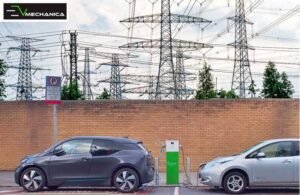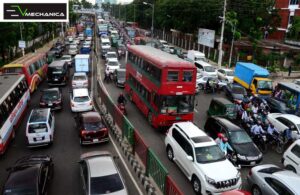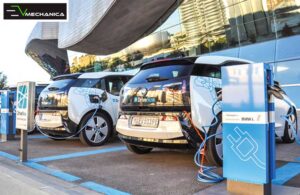 Leaving its mark on the transportation sector with its high rate of adoption, Impact of EVs on Electricity in India will begin to show as electric mobility becomes a new norm.
Leaving its mark on the transportation sector with its high rate of adoption, Impact of EVs on Electricity in India will begin to show as electric mobility becomes a new norm.
Under the government’s push towards cleaner and greener transportation, the expansion of electric vehicle manufacturing plants is now covering India’s horizon.
With huge projects looming under India’s belt, various global giants are eyeing the nascent market of Electric Vehicles (EVs) that in turn is allowing a large amount of investment to be poured through FDI thus, boosting India’s economy to greater heights.
However, as the saying goes, every coin has two sides.
With the rapid electrification of mobility accelerating around the world, energy producers and distributors need to understand the fact that there exists a potential Impact of EVs on Electricity in India and its demand.
In a recent study, India is expected to require about 100 TWh of electricity (about 5% of total electricity) by 2030, under the condition that 80% of the country’s population adopts electric vehicles.
At present, consumers have to either utilize less electricity during peak hours or pay more for usage. But in the coming days, the load of electric vehicle charging networks will gradually increase with the expansion of EVs in every household.
Understanding this looming dilemma, industry experts have analyzed some of the major anecdotes on Impact of EVs on Electricity in India.
How will Electric Vehicle Expansion Affect Electricity Consumption in India?
Recalling some of the key Impact of EVs on Electricity in India, the factors include,
Increase in Demand for Electricity
With the growth of EVs, the demand for electricity is expected to increase in India, hence showing an Impact of EVs on Electricity in India as EVs require electricity to charge their batteries,
This means that as more EVs are on the road, more electricity demand will rise.
According to a study, by 2030, the demand for electricity due to EVs could be around 69.6 TWh, equivalent to 5% of the total electricity consumption in India.
Change in Electricity Load Curve
 The adoption of EVs is expected to change the load curve of the electricity grid in India. The load curve is a graph that shows the variation in electricity demand over time.
The adoption of EVs is expected to change the load curve of the electricity grid in India. The load curve is a graph that shows the variation in electricity demand over time.
The charging of EVs is expected to cause a significant increase in electricity demand during off-peak hours. This can be a challenge as Impact of EVs on Electricity in India would deepen as this requires changes in the power infrastructure to meet the new demand pattern.
Opportunities for Renewable Energy Integration
Another EVs Impacting National Grid in India with the growth of EVs is the opportunities for the integration of renewable energy sources into the electricity grid.
EVs can be charged using electricity generated from renewable sources such as solar and wind. This can reduce the carbon footprint of the transportation sector and increase the share of renewable energy in the overall electricity mix.
Risks of Overloading
Keeping an eye on Impact of EVs on Electricity in India, the risk of overloading local transformers is abnormally high during peak hours.
Considering a scenario in which all-electric vehicles are connected to the grid at the same time for recharging. Under this condition, the local transformers may not be able to withstand such extra load demand.
Scheduling electric vehicle recharging during non-peak demand periods is known as valley filling, that can save utilities millions of dollars by reducing their dependence on peaking power plants, run only when the demand is high. This approach will then have to rely on the smart grid system.
Examples of EVs Impacting National Grid in India
 In 2020, Delhi Metro Rail Corporation (DMRC) became the first metro rail corporation in India to receive power from a waste-to-energy plant to charge its EV fleet.
In 2020, Delhi Metro Rail Corporation (DMRC) became the first metro rail corporation in India to receive power from a waste-to-energy plant to charge its EV fleet.
DMRC had commissioned a 2.4 MW waste-to-energy plant at Ghazipur, Delhi, which generates electricity from the processing of municipal solid waste. The plant generates 17.5 lakh units of electricity per month, which is used to charge DMRC’s fleet of 200 EVs, hence giving a perfect example of Impact of EVs on Electricity in India.
Another major anecdote is the case of Bangalore International Airport Limited (BIAL) wherein BIAL became the first airport in India to run its entire fleet of 40 airport taxis on electric power.
BIAL installed 80 EV chargers with a capacity of 20 kW each to support the changing needs of its fleet. The EV chargers are powered by solar panels installed on the airport’s roof, which generate 3.35 MW of electricity.
Way Forward
 Amid the rising growth rate of electric vehicles in India, Impact of EVs on Electricity in India is also expected to have a significant impact on the electricity sector.
Amid the rising growth rate of electric vehicles in India, Impact of EVs on Electricity in India is also expected to have a significant impact on the electricity sector.
The increase in demand for electricity, changes in the load curve, and opportunities for renewable energy integration are some of the effects that are likely to occur.
